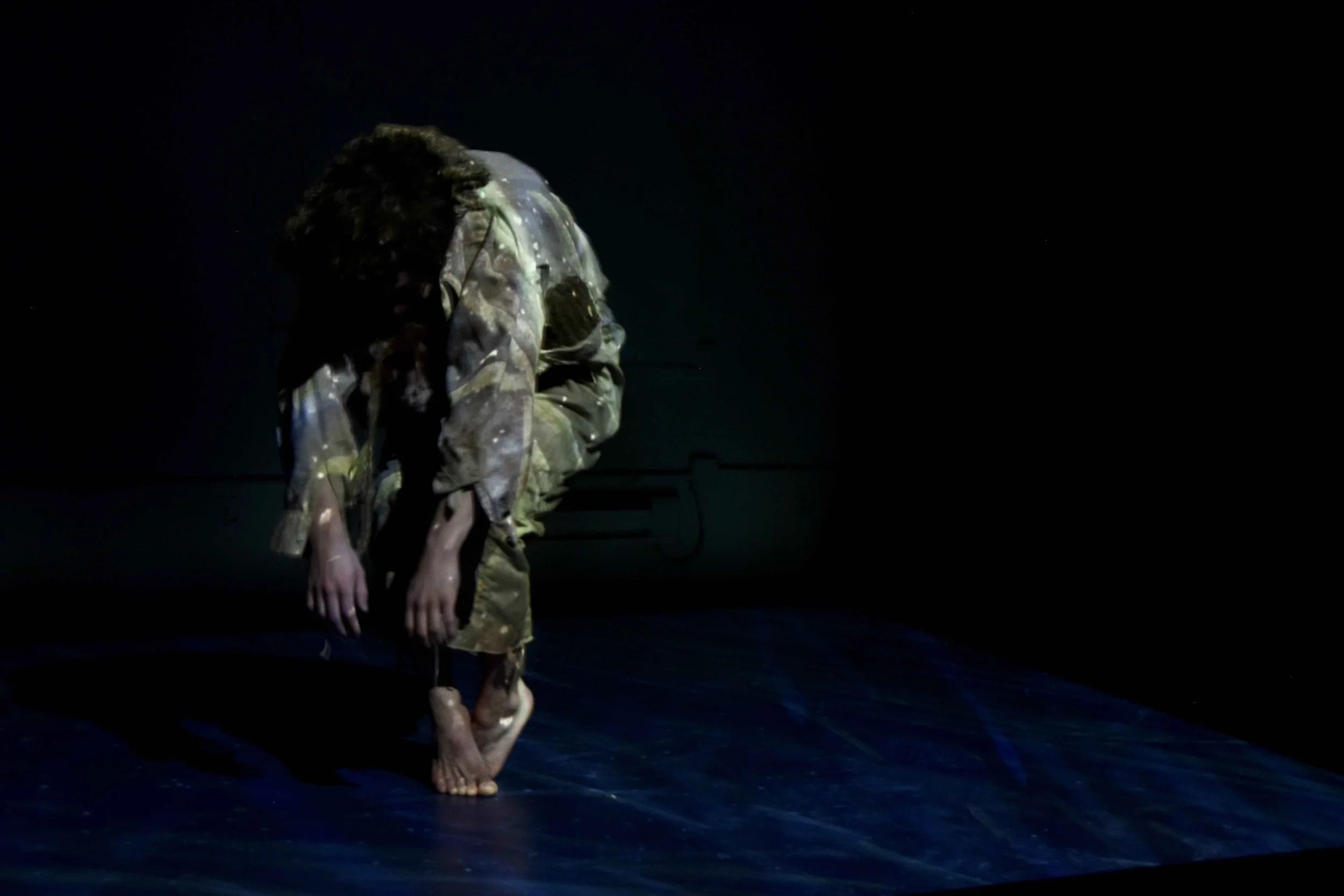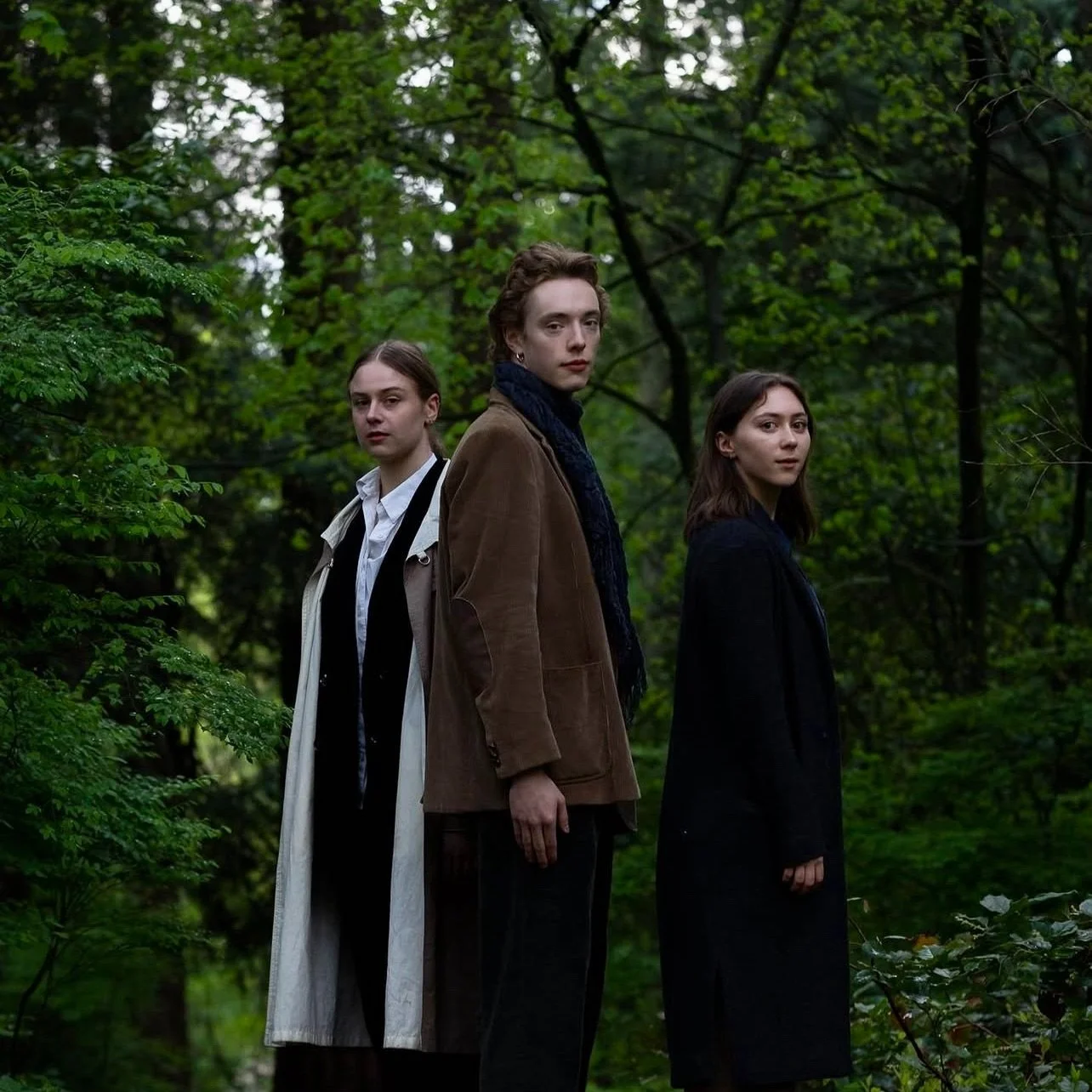Dance review: Life, laughs, and the apocalypse—BC WAVE/S program takes an epic journey
With breathtaking breadth, Johan Inger’s PASSING looks at the traces we leave behind; Roy Assaf’s 20 People pokes fun in fuchsia pink
Johan Inger’s Passing. Photo by Luis Luque
Ballet BC presents WAVE/S at the Queen Elizabeth Theatre until May 13
THE ABSURDITY of life, human fragility, and our impending doom: Ballet BC’s season closer is a sweeping journey through levity undercut with darkness.
Both full-company works feature generous amounts of fun and laughter—something of a rarity for cutting-edge ballet—but in entirely different ways. Whereas Johan Inger plays with the unpredictable turns of life, Roy Assaf seems to be sending up earnest contemporary dance—not to mention Lululemon-era yoga and New Age trends.
Fans of past Inger works like Walking Mad and B.R.I.S.A. knew they were in for a treat, but no one could have predicted the dazzling scale of the 20-dancer PASSING, nor its breathtaking breadth. It was about nothing less than life and death.
Inger has said his movement “searches through traditions and heritage”, and he assuredly cycles through folk circle dancing, hip-hop moves, tap, and swing to create a flow all his own. The music ranges from old West barndance to the haunting, searching acoustic guitar of Erik Enocksson.
Dancers move about a bright stage in vibrant hues of sapphire, amethyst, and heliodor, all the while leaving traces in black ash that had been poured in a winding path around the floor. One moment female dancers are clicking their heels in the air; the next, a male is diving into a killer handstand. Several times, Rae Srivastava randomly rampaged across the stage in tap shoes, his hands on the floor and ass in the air like a maniacal gorilla. In testimony to Inger’s ability to convey complex ideas, the dancers move in a line across the stage, going from crawling to walking—the evolution of man unfolding in front of our eyes.
There is a lot thrown into PASSING, but its pleasure is its messy, aching, stupid humanity. As challenging as it must be to execute the fast-flowing pastiche of styles, the dancers are openhearted and skilled enough to summon that aching humanity. There’s a gorgeous, wonky trio between Sidney Chuckas, Srivastava, and Michael Garcia, and some beautiful partnering, but the point is that Inger allows each of the dancers to stand out as individuals and compelling characters—vulnerable, lost, flawed, and alive. (Kudos to Vancouver lighting designer Alan Brodie, who delicately spotlights those key figures amid the crowd.) A gentle pas de deux between Sarah Pippin and Orlando Harbutt is breathtaking. And Jacob Williams’s haunting singing again grounds the piece in the human.
Inger often works the element of surprise, and we won’t give away the best moments that he, well… births here. Suffice it to say he was inspired by watching Spain’s La Palma volcano swallow up villages and homes a few years back. As the black ash becomes more scattered on the stage, the mini-community he builds becomes more chaotic. Love, sex, babies; unfettered laughter and uncontrolled sobbing; the individual versus the group. What is it all for, and what will we really leave behind?
That symbolic ash becomes increasingly poignant and pushes things into even more expansive realms. We will all return to ash, especially in a world of climate cataclysm. In a riveting scene toward the end, Garcia, stripped of his jewel-toned costume, seems like he’s being swallowed by the powdery grey residue on the ground. (Here in forest-fire-plagued BC, there are even more visceral associations with the sight of cinder.)
Life as we know it may be “passing”.
Michael Garcia in Passing.
And then there’s the idea that the miniscule traces we leave as individuals—seen literally as dancers whisk through the ever-piling ash—will eventually disappear as the Earth burns. It’s not the kind of mess you can sweep away, though dancer Emily Chessa, celebrating her 10th season with the company this week, does try with her giant janitor’s broom.
So behind the laughter, the unfettered silliness, and the dizzying, ever-shifting dance that scatters across the stage, lies an apocalyptically dark concept. Not that you may at first realize that as you lose yourself in this elaborate, enthralling masterwork that pushes excitingly beyond what you expect from an evening of “ballet”.
Following PASSING as it does, 20 People might have come off more sarcastic and jocular than intended. But intentions are hard to read with Assaf. The Israeli choreographer, who’s worked with the likes of Emanuel Gat and Batsheva, avoids explaining his works.
20 People by Roy Assaf. Photo by Luis Luque
20 People opens with the troupe members wearing eye-popping-fuchsia stretch-velvet bodysuits, all seated in the lotus position, as soul singer Danny Hathaway’s “A Song for You” blares. But as order and calm break apart, it’s the dancers that have a “song” for us. Without giving too much away, synchronized formations move on and off the stage, each group hitting its own extended chorus of “ohm” vocalizations—voices building to maniacal extremes as the piece progresses. Describing the effect of all these fuchsia bodies moving and ahhh-ing is impossible. Some in the audience clearly didn’t know what to make of it. Others were laughing.
Assaf is likely not being serious, repeating things to absurd extremes—but the demands on the dancers are no joke. Ballet BC’s female corps really brings it to 20 People, long hair flailing, muscles flexing, ohms resounding. In a string of rough partnering, the choreographer shows his chops, the men vocalizing and turning the women like ragdoll Amazons.
In his playful program notes, Assaf invites audience members to “lose your patience in our performance”. And some did. But the piece could also be read as a nose-thumbing to a culture that tells us to just chill, meditate, and do some yogic breathing. Especially as the world is burning.















